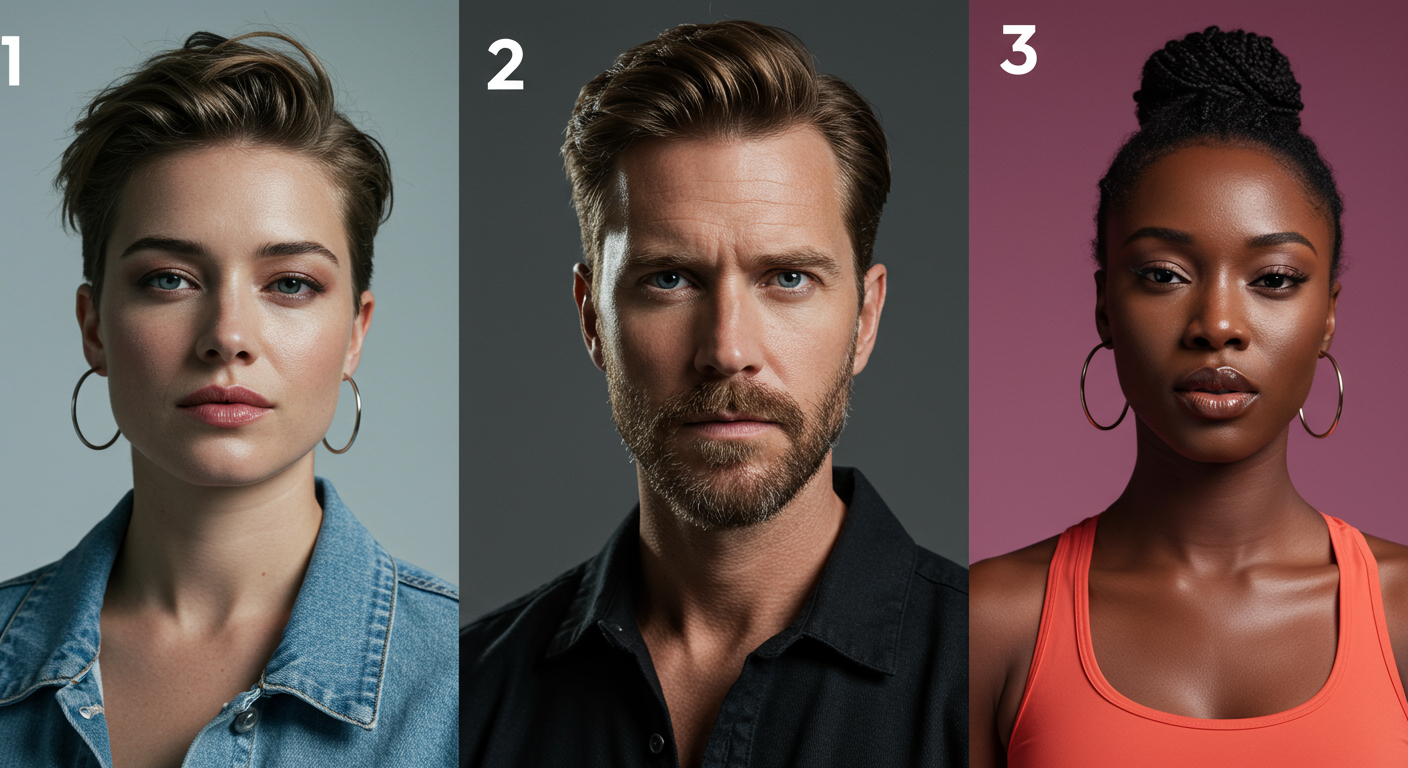
John: Hello and welcome back to the blog. Today, we’re delving into a burgeoning digital philosophy, a lifestyle that’s quietly gaining traction among those who’ve spent years navigating the digital frontier. It’s a concept that begins with a simple observation, one you might have even made yourself. As a post from mindbodygreen aptly puts it, “Have you ever noticed your fine lines looking more pronounced than usual?” We’re taking that question out of the dermatology clinic and into the very fabric of our online lives. We’re talking about the “Fine Lines, Pronounced” lifestyle.
Lila: Okay, John, I have to jump in right away. I’m glad you started there, because when you pitched this topic, I was completely baffled. I did the preliminary research, looked at the search data, and everything points to skincare. We have results from medical sites like Sundara Medical talking about “wrinkles that pronounce aging in the face and neck,” and definitions from Oxford Learner’s Dictionaries describing a wrinkle as “a line or small fold in your skin.” Are we sure we’re in the right vertical? This feels more like a beauty blog topic.
John: That’s the perfect entry point, Lila. Your confusion is exactly what most people feel when they first encounter this idea. The genius of the “Fine Lines, Pronounced” philosophy lies in its appropriation of this very specific, physical language to describe something deeply digital and psychological. It’s a metaphor. We aren’t talking about the skin, but about the texture of our digital identity. Think about the definitions. What is a fine line? According to a source like CodeSkin, they are “often the first sign of ageing.” In the digital world, what are the first signs of an account’s age? Old posts, early design choices, shifting opinions. These are our digital fine lines.
Lila: So, you’re saying the ‘fine lines’ are our digital history? The little imperfections and artifacts that show we’ve been online for a while? Not something to be erased or hidden, but… a sign of life?
John: Precisely. And the second word, “pronounced,” is the active component of the lifestyle. It’s not just about passively having these lines; it’s about making them intentional, visible, and meaningful. An Instagram post I found from by_candice_aesthetics mentions how certain lines can “become quite pronounced over time.” In this philosophy, you don’t fight that process; you embrace it. You choose to make your digital history and evolution a pronounced, central feature of your identity, rather than something you try to smooth over with the latest digital equivalent of a wrinkle cream.
Lila: I think I’m starting to see the shape of this. It’s a reaction against the curated, flawless, perpetually-young online persona. I’m looking at a Reddit thread here from the r/30PlusSkinCare community, and it makes a fascinating distinction. Someone posts about their “extreme crows feet fine lines,” and a commenter replies, “You’re actively smiling those are dynamic lines. We have to see your normal static face to see actual skin condition.” That feels incredibly relevant. Is this lifestyle about valuing our ‘dynamic’ digital lines over a perfect ‘static’ digital face?
John: You’ve hit on the very core of it, Lila. That distinction is a foundational pillar of this philosophy. This isn’t about letting your digital presence decay; it’s about choosing a dynamic, expressive existence over a static, lifeless one. Let’s spend some time unpacking that. The “Fine Lines, Pronounced” lifestyle is, at its heart, about authenticity and digital maturity.
Lila: So, let’s define the core philosophy more clearly for our readers. What does it actually mean to live this way day-to-day?
John: At its most basic level, it means to reject the pursuit of a flawless, “wrinkle-free” digital presence. The Cambridge Dictionary defines a wrinkle as “a small line in the skin caused by old age,” but also as “a problem.” This lifestyle reclaims the word. The wrinkles aren’t a problem to be solved; they are evidence of a life lived. They are the markers of experience. Sundara Medical’s page on wrinkles and fine lines directly states they “pronounce aging.” The “Fine Lines, Pronounced” practitioner doesn’t see aging as a negative. In a digital context, it means experience, history, and the accumulation of knowledge.
Lila: That’s a powerful reframing. So instead of deleting our embarrassing posts from ten years ago, this philosophy would suggest we… what? Keep them? Highlight them even?
John: Exactly. It’s about owning the complete timeline. Think about the term “fine.” Merriam-Webster gives us multiple definitions. Of course, there’s the adjective ‘fine’ meaning of high quality. But there’s also the noun: “a sum of money to be paid as a punishment.” The “Fine Lines, Pronounced” lifestyle plays with this duality. The “lines” are the ‘fine’ we pay for the experience we’ve gained. They are the cost of learning in public, of evolving. To smooth them away is to pretend the lesson was never learned, that the fine was never paid.
Lila: I like that. It’s like a proof-of-work for personal growth. In the tech world, we’re obsessed with seamlessness and perfect user interfaces. This feels like a counter-cultural move towards celebrating the seams. The source from CodeSkin also says fine lines are “caused by repeated facial expressions.” So in our metaphor, these are the marks left by repeatedly engaging, laughing, arguing, and thinking online. They’re not signs of decay, but signs of activity.
John: That’s the essence of it. And it’s a direct counter-narrative to another trend mentioned in the data: “prejuvenation.” A blog from Bella Tu Med Spa discusses starting aesthetic treatments in your 20s and 30s as a preventative measure. The digital equivalent is sanitizing your online presence from the very beginning, ensuring no “wrinkles” can ever form. The “Fine Lines, Pronounced” adherent finds this approach sterile. They believe the most interesting and trustworthy digital identities are the ones that show a clear progression over time.
Lila: So, to summarize the philosophy: It’s the conscious choice to maintain and display the history of your digital presence. It treats the small folds, creases, and lines—the imperfections and signs of age—not as flaws to be corrected, but as authentic markers of experience and growth. It’s about choosing a dynamic, expressive identity over a static, perfect one.
John: An excellent summary. This brings us back to that critical distinction we touched on earlier, from that Reddit thread. It’s so important that I believe it forms the two pillars of how this lifestyle is practiced: understanding and balancing the Dynamic and Static Lines in your digital life.

Lila: Right, the “dynamic lines” versus the “static face.” Let’s break that down. How does that translate from a comment on a skincare forum to a practical guide for one’s online life?
John: Let’s start with “Dynamic Lines.” The source from cheeks.cc states that “Dynamic wrinkles are fine lines that develop from frequent facial expressions such as smiling, frowning, or squinting.” This is a perfect metaphor. Dynamic digital lines are the traces left by active, real-time engagement. They are the comment threads, the live-tweet reactions to an event, the edit history on a collaborative document, the evolution of a personal bio over five years. They are proof of a thinking, feeling, interacting presence.
Lila: So a “dynamic” digital citizen is one who is constantly in motion? They’re not just posting polished, finished products; they’re showing their work, their reactions, their thought process. Their digital face is expressive. It smiles, it frowns, it squints in concentration.
John: Precisely. Now contrast that with the “Static Face.” This represents the curated, polished, and unchanging aspects of a digital identity. It’s the perfect “About Me” page that hasn’t been updated in years. It’s the Instagram feed where every photo adheres to the exact same filter and theme. It’s the corporate LinkedIn profile that lists skills but shows no recent activity or articles. It’s a mask of perfection.
Lila: And this lifestyle isn’t about eliminating the static parts, right? You need a “face,” a recognizable identity. But it argues that a profile that is *only* static is lifeless. It’s a digital mannequin. The real person is found in the dynamic lines.
John: Correct. A healthy digital identity, according to this philosophy, requires both. But it champions the dynamic. It encourages us to create more of those lines. This is where another piece of data becomes a fascinating, if cautionary, part of the metaphor. A guide from Number Analytics points out that “Wrinkles caused by sun damage are deeper and more pronounced than expression lines.” They are caused by “prolonged exposure to UV radiation.”
Lila: Wow. So what’s the digital equivalent of “sun damage”? Getting into flame wars? Having a post go viral for the wrong reasons? Being exposed to the harsh glare of public scrutiny?
John: It could be all of those things. “Sun damage” represents the harsher, more challenging interactions online. It’s surviving a cancellation attempt, having a public failure, or engaging in prolonged, difficult debates. These experiences leave deeper, more “pronounced” marks on your digital identity. The “Fine Lines, Pronounced” philosophy suggests that even this “damage” shouldn’t necessarily be erased. It’s a testament to resilience. It adds a depth of character that a sheltered, “undamaged” profile can never achieve.
Lila: That’s a radical take. The standard PR advice is to scrub any negativity immediately. This lifestyle says you should wear your digital scars as proof you’ve been in the arena. It reminds me of the lines that appear as we age. A source I’m looking at from The Healthy Woman blog notes, “Wrinkles typically become more pronounced from ages 40 to 55 and most obvious after 65.” This suggests a correlation between the prominence of lines and the accumulation of life experience.
John: An excellent point. That timeline aligns perfectly with the arc of a career or a long-term digital presence. The “Fine Lines, Pronounced” lifestyle isn’t for the digital ingenue; it is a philosophy for the digitally mature. It’s for those who have been online long enough to have a history, to have those dynamic lines, and maybe even a little “sun damage.” But this brings us to the biggest threat to this lifestyle—a passive force that can turn a vibrant, dynamic presence into a brittle, static relic.
Lila: What’s that? The temptation to delete everything and start over?
John: No, something far more insidious. We can call it “Digital Dehydration.” It’s the single biggest factor that can make your fine lines look less like marks of wisdom and more like signs of neglect.
Lila: Digital Dehydration. I’m intrigued. You’re pulling this from the skincare SERPs again, aren’t you?
John: I am. The parallels are uncanny. The article from mindbodygreen that we opened with poses the question perfectly: “Have you ever noticed your fine lines looking more pronounced than usual?” It then provides the answer: “Your fine lines are probably at their peak when your skin is dry or dehydrated.” This is the crux of the problem. When you stop actively engaging online, when you let your presence dry up, your existing history—your fine lines—doesn’t disappear. It just looks worse. It becomes more stark, more prominent in a negative way.
Lila: That makes so much sense. It’s like an abandoned blog. The posts are still there, but without new content, they just look dated. The “lines” are there, but they feel like cracks in a ruin, not the laugh lines on a living face. A Facebook post from a wellness center called The Covery lists the signs of dehydrated skin, and it’s a perfect checklist for this digital phenomenon. It says, “Fine lines looking more pronounced ✨ Itchy or irritated patches.”
John: Let’s analyze that. “Fine lines looking more pronounced”—we’ve established this is your static past looking stark and dated without the context of current activity. But “itchy or irritated patches” is also brilliant. What are the itchy, irritated patches of a dehydrated digital presence? They are the unresolved arguments in old comment sections. They are the outdated opinions that now seem cringeworthy without any new content to show you’ve evolved. They are the digital ghosts that haunt a stagnant profile.
Lila: And The Covery post continues with a crucial insight: “Even oily skin can be dehydrated — it’s about water, not oil!” How do we apply that? “Oily” skin could be a metaphor for a slick, highly produced, corporate-style content strategy. But even that can feel dehydrated if there’s no real substance or engagement. The key isn’t the production value (oil), it’s the constant flow of authentic interaction (water).
John: You’ve articulated it perfectly, Lila. Digital hydration is about maintaining that flow of “water.” It’s the constant stream of new thoughts, new interactions, new projects. It’s what keeps your digital skin supple and alive. Without it, your fine lines, which should be a record of your dynamic history, become brittle. Dehydration turns a living digital document into a historical artifact. The “Fine Lines, Pronounced” lifestyle is not about creating a digital museum of yourself; it’s about tending to a digital garden.
Lila: So, if you’re going to embrace your digital wrinkles, you have a responsibility to keep your presence hydrated. You can’t just point to a ten-year-old blog post as proof of your depth if you haven’t written anything since. The pronouncement of the lines has to be an ongoing, active process. This leads to the most important question: How does one actually *do* this? What’s the toolkit?
John: An excellent question. It’s not about buying a product, but about adopting a set of principles and practices. We can think of it as a kind of regimen. Vogue, in an article about the “Best Wrinkle Cream,” quotes a Dr. Dendy Engelman who says such products “play an important role in maintaining skin health and longevity while delaying the onset of fine lines and wrinkles.” In our case, we are not delaying our lines; we are cultivating them. Our toolkit is about maintaining the health and longevity of our digital identity *through* its lines.
Lila: So we’re building a “digital skincare” routine. Instead of products, we have practices. I’m looking at a Glamour article on the “Best Wrinkle Patches.” It talks about using “forehead stickers to hydrogel masks with retinol and peptides to smooth fine lines.” What’s the “Fine Lines, Pronounced” alternative to a wrinkle patch?
John: The alternative is what we might call an “Authenticity Patch.” Instead of a patch to smooth a line, you apply a patch to highlight it. In practice, this could be writing a new blog post that directly links back to an old, perhaps naive, post you wrote years ago, and reflecting on how your perspective has changed. You’re not erasing the old line; you’re adding a new, connected line, creating a richer texture.
Lila: I love that. So instead of a “liquid facelift” that combines Botox and fillers to erase lines, as one source (the-healthywoman.com) describes, you’re performing a kind of “liquid documentation,” using new content to plump up and give context to the old lines.
John: That’s a fantastic way to put it. Let’s structure this toolkit into a few core principles. A practical guide for our readers who want to adopt this philosophy.
First: **Embrace Dynamic Expressions.** This is our foundation. Prioritize interactive platforms where you can show your thought process. As the cheeks.cc source reminds us, dynamic lines come from expression. So, engage in conversations, ask questions, share works-in-progress. Let your digital face be animated.
Second: **Hydrate Consistently.** This combats digital dehydration. Maintain a steady flow of “water”—new ideas, new connections, new content. This ensures your past contributions feel like part of a continuum, not relics. As mindbodygreen warned, a dehydrated presence makes fine lines look pronounced in a negative way. Consistent hydration makes them look like signs of wisdom.
Lila: Okay, let me try a third one based on our discussion. **Reject Digital ‘Prejuvenation’.** This comes from that Bella Tu Med Spa article. The principle is to resist the urge to scrub your early digital history clean. Don’t be afraid of your digital “crow’s feet,” which the same article notes are “often the first to appear.” Those first, awkward steps online are the foundation of your digital story. They prove you weren’t born perfect.
John: Excellent. I’ll add a fourth: **Reframe ‘Sun Damage’.** This draws from the Number Analytics piece about deeper wrinkles from sun exposure. View your public mistakes, your tough debates, your “ratio’d” posts, not as shameful blemishes, but as experiences that created “deeper and more pronounced” lines of character. Acknowledge them. Show you’ve learned from them. They are proof of your resilience.
Lila: This is great. I have one more. I’m looking at that Instagram post from by_candice_aesthetics again. It specifically mentions “Those vertical ’11s’ between the brows” which “can become quite pronounced over time… from stronger facial muscles.” These are the lines of concentration, of frowning in thought. So, the fifth principle could be: **Pronounce Your ’11s’.** What are the topics you’ve thought deeply and consistently about? What are the core themes that have marked your digital presence for years? These are your strongest lines. Make them pronounced. They are the pillars of your intellectual and digital identity.
John: A brilliant synthesis, Lila. So, our five-part toolkit is: Embrace Dynamic Expressions, Hydrate Consistently, Reject Digital Prejuvenation, Reframe Sun Damage, and Pronounce Your ’11s’. This is a comprehensive regimen for anyone looking to cultivate a more authentic, resilient, and interesting digital self. It moves beyond the superficial and into the substantive.

Lila: So where does this all lead? What’s the future of this philosophy? Is it destined to be a niche quirk, or could it become a more mainstream way of thinking about our lives in the Metaverse and beyond?
John: I believe it has significant future potential, primarily as an antidote to the prevailing culture of digital perfectionism. As our lives become more deeply enmeshed with our digital avatars, the pressure to present a flawless, ageless, and conflict-free version of ourselves will only intensify. “Fine Lines, Pronounced” offers a sustainable, more humane alternative. It’s a long-term strategy for digital well-being.
Lila: It feels more honest. The data point from The Healthy Woman blog stating that wrinkles become more pronounced from 40 to 55 is key. That’s often the peak of a person’s career and influence. This lifestyle suggests that our digital peak shouldn’t be when we look the newest, but when we have the most accumulated experience to show. It’s a shift from valuing newness to valuing depth.
John: Precisely. It’s a philosophy of digital integrity. It understands that a life, whether physical or digital, is defined and enriched by the passage of time. The various dictionary definitions of “wrinkle” or “line” that we’ve discussed—from a small fold in the skin (Oxford) to a problem (Cambridge)—are all simplistic. This lifestyle synthesizes them into something more complex: a wrinkle is a beautiful problem, a fold in the map that proves a journey has taken place.
Lila: So, in the future, maybe we won’t be trying to find the best wrinkle cream for our online profiles. Maybe we’ll be looking for the best tools to archive and contextualize our history, to link our dynamic lines together into a coherent story. It’s a future where our digital selves are allowed to have a past, to show wear, to be interesting. To have a face with a story, not just a flawless mask.
John: That’s the optimistic vision. It’s a quiet rebellion against the ephemeral, a stand against the sanitized. It’s a deep-seated argument for a digital presence that is not just passively seen or scrolled past, but is actively *read*—fine lines, pronounced, and all.
